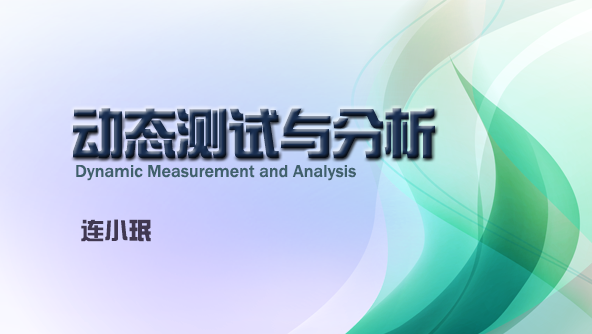
当前课程知识点:International Finance > Chapter Six International Financing Management > Chapter Six - assignment > Introduction
返回《International Finance》慕课在线视频课程列表
返回《International Finance》慕课在线视频列表
Fast-changing international arena
who rules over finance
Welcome to the course of international finance
With forty-year reform and opening up to the outside world
China has become the mere country in the world
with the entire industry categories
according to the industry classification by the United Nations
the largest manufacturing country
the largest goods-trade country
the largest capital-inflow country
and the largest foreign reserve holder in the global market
China has emerged as the second largest economy in the world
with the annual economic growth rate
of 9.5% on average over 40 years
The world stage tends to have the new characteristics
such as the increasing differentiation among different economies
and game between globalization and reverse-globalization
In this context
the recent global economy is experiencing
the three-low situation
such as low economic growth
low inflation rate and low interest rate as well
In the international setting
why did Argentine peso depreciate by 50.9%
by December 14th 2018
Why did Chinese yuan plunged beyond 7 per dollar
on August 5th 2019
Why has the size and year-on-year growth rate
of the foreign direct investment in the developed countries
and in the world declined consecutively for four years since 2016
Why did new emerging economies
become the major injuring areas of capital flight
How did the trade conflict and poisoning pill clause
affect the balance of payments
as well as internal and external balance in one country
The subject of international finance
will help you answer all these questions case by case
International finance is a discipline
which can be examined from two perspectives
From the perspective of macroeconomics
international finance is closely related
to international economics
It’s in essence the fictitious economic analysis aspect
of international economics
as opposed to international trade
as the physical economic analysis aspect of it
The macroeconomic analysis of international finance
mainly involves three types of management
such as the management of balance of payments
international monetary management
as well as the management of internal and external balance
Firstly
an economy as a special accounting entity
should prepare the international economic accounting statements
such as balance of payments statement
and international investment position
on the basis of double-entry bookkeeping principle
to record its international transaction flows
and its holdings of foreign assets and liabilities as well
The macromeanings of overall balance
and the classical theories of balance of payments
facilitate the understanding of payments imbalance
Secondly
international monetary management
comprises the evolution and reform of international monetary system
the management of the international price of currency
as well as international reserve management
The main focus is the international price of currency
or the relative price ratio of two currencies
known as the exchange rate
The international price quotations of currency
or exchange rate quotations
and the international exchange rate arrangements or regimes
are the bases for the pricing and settlement
of international transactions conducted by one economy
International exchange rate regime
is also the main form of international monetary system
One of the major considerations
in the current international monetary management
is what the initial enactment
of Libra White Paper by Facebook on June 18th 2019
provides us to imagine
the reform of international monetary system
Thirdly
the macroeconomic performance of one economy
is usually indicated by the behaviors
of domestic product market money market
and foreign exchange market
or in brief
by internal and external economic performance
Such performance will be disturbed
by the unexpected internal and external shocks
Under different exchange rate regimes
monetary authorities have different reactions
to the changes in the exchange rate
as a result of the shocks
which in turn affect internal and external balance
For instance
the recent international economic events
such as the interest rate raising by FED
the global monetary easing wave
the forthcoming conclusion
of the Regional Comprehensive Economic Partnership
in 2020 etc
may have different effects
on the internal and external performance
of relevant countries
From the perspective of microeconomics
the practices of international finance
is essentially the international financial management
made by the multinational corporations
involving the exchange exposure management
international investment management
and international financing management
made by multinational corporations
On the one hand
the multinational corporations
usually try to manage three main types
of foreign exchange exposure
including transaction exposure
or operating exposure and translation exposure
These exchange exposures can be managed
with appropriate methods
such as the conduct of foreign exchange transactions
and the use of operational techniques etc
On the other hand
the financial managers of multinational corporations
also need to make international investment and financing decisions
As for international investment decisions
the financial managers should take account of
both international portfolio management
and international capital budgeting management
The objective of the former decision
is to construct an optimal international portfolio
with a minimum risk
The latter decision involves two particular concerns
One is the two perspectives
to examine the feasibility
of the proposed international capital budgeting project
say the parent company viewpoint
and the foreign subsidiary or project viewpoint
another is the international capital budgeting risk as well
Especially
the international investment risk is our main focus
for many recent international economic events in this field
deserves attention
For instance
the United States
the United Kingdom and the European Union
formulated the new criteria
for reviewing the foreign investment in succession
The technology shares
in the United States
plummeted and then
the turning point in U.S. share market arose
The Brexit will make the United Kingdom
lose the privilege of the European financial pass
and thereby boost the changing
in the European financial center
On October 12th 2018
China officially enacted
to implement the formal connection
between London and Shanghai Stock Exchanges
In addition
the restrictions on the investment amount
of QFII and R QFII
were both lifted by China on September 10th 2019
The astonishing four circuit breakers occurred
consecutively in the U.S. stock market
in March 2020
What opportunities and challenges
will the above-mentioned events
bring to the global asset allocation
and the international investment risk management
such as the international diversification
so as to bring more benefits
to international investors
As for international financing decisions
the financial managers should allow for
the availability of international sources of finance
such as international trade finance
international project finance
and international securities finance
Furthermore
they should optimize the international financial structure
to raise the necessary sources of finance
with a minimum international weighted average cost of capital
Now Let’s get close to international finance
to explore the mysteries
of these theories and practices
-Introduction - discussion (2)
-Introduction - assignment
-Chapter One Management of Balance of Payments
-1.1.1 International Transaction Statements
--International Transaction Statements
-1.1.2 Bookkeeping of International Transactions: Double-entry Bookkeeping Principle
--Bookkeeping of International Transactions: Double-entry Bookkeeping Principle
-1.1.3 Bookkeeping of International Transactions: Record-keeping Examples
--Bookkeeping of International Transactions: Record-keeping Examples
-1.2.1 Six Types of Payments Balance
--Six Types of Payments Balance
-1.2.2 Macromeanings of Current Account Balance
--Macromeanings of Current Account Balance
-1.2.3 Macromeanings of Official Settlements Balance and Payments Imbalance
--Macromeanings of Official Settlements Balance and Payments Imbalance
-1.3.1 Elasticity Approach to Balance of Payments
--Elasticity Approach to Balance of Payments
-1.3.2 Multiplier Approach to Balance of Payments
--Multiplier Approach to Balance of Payments
-1.3.3 Absorption Approach to Balance of Payments
--Absorption Approach to Balance of Payments
-1.3.4 Monetary Approach to Balance of Payments
--Monetary Approach to Balance of Payments
-Chapter One - assignment
-Chapter Two International Monetary Management
-2.1.1 Bimetallism Standard
-2.1.2 Classical Gold Standard and International Monetary System during Inter-war Period
--Classical Gold Standard and International Monetary System during Inter-war Period
-2.1.3 Bretton Woods System (1)
-2.1.4 Bretton Woods System (2)
-2.1.5 Floating Exchange Rate Regime and Emerging Market and Regime Choices
--Floating Exchange Rate Regime and Emerging Market and Regime Choices
-2.1.6 Reform of International Monetary System (1)
--Reform of International Monetary System (1)
-2.1.7 Reform of International Monetary System (2)
--Reform of International Monetary System (2)
-2.2.1 International Price of Currency: Exchange Rate(1)
--International Price of Currency: Exchange Rate(1)
-2.2.2 International Price of Currency: Exchange Rate(2)
--International Price of Currency: Exchange Rate(2)
-2.2.3 International Price Quotation of Currency
--International Price Quotation of Currency
-2.2.4 International Exchange Rate Arrangement (1) Categories of Exchange Rate Regime
--International Exchange Rate Arrangement (1) Categories of Exchange Rate Regime
-2.2.5 International Exchange Rate Arrangement (2) Regime Choices & Impossible Trinity
--International Exchange Rate Arrangement (2) Regime Choices & Impossible Trinity
-2.2.6 Traditional Classical Theories of Exchange Rate Determination
--Traditional Classical Theories of Exchange Rate Determination
-2.2.7 Modern Classical Theory: Asset Market Approach to Exchange Rate
--Modern Classical Theory: Asset Market Approach to Exchange Rate
-2.2.8 Modern Classical Theory: Monetary Approach to Exchange Rate (1)
--Modern Classical Theory: Monetary Approach to Exchange Rate (1)
-2.2.9 Modern Classical Theory: Monetary Approach to Exchange Rate (2)
--Modern Classical Theory: Monetary Approach to Exchange Rate (2)
-2.3.1 International Reserve vs Foreign Reserve
--International Reserve vs Foreign Reserve
-2.3.2 Management of International Reserve Size
--Management of International Reserve Size
-2.3.3 Management of International Reserve Structure(1)
--Management of International Reserve Structure(1)
-2.3.4 Management of International Reserve Structure(2)
--management of internatioanl reserve structure (2)
-Chapter Two - assignment
-Chapter Three Management of Internal and External Balance
-3.1.1 Domestic Product Market (1)Equilibrium GDP
--Domestic Product Market (1)Equilibrium GDP
-3.1.2 Domestic Product Market (2)Spending Multiplier Effect
--Domestic Product Market (2)Spending Multiplier Effect
-3.1.3 Domestic Money Market
-3.1.4 Foreign Exchange Market
-3.2.1 Official Intervention with Automatic Adjustment and Sterilization
--Official Intervention with Automatic Adjustment and Sterilization
-3.2.2 Internal and External Balance and Domestic Monetary Shock
--Internal and External Balance and Domestic Monetary Shock
-3.2.3 Internal and External Balance and Domestic Spending Shock
--Internal and External Balance and Domestic Spending Shock
-3.2.4 Internal and External Balance and International Capital Flow Shock
--Internal and External Balance and International Capital Flow Shock
-3.2.5 Internal and External Balance and International Trade Shock
--Internal and External Balance and International Trade Shock
-3.3.1 Internal and External Balance and Domestic Monetary Shock
--Internal and External Balance and Domestic Monetary Shock
-3.3.2 Internal and External Balance and Domestic Spending Shock
--Internal and External Balance and Domestic Spending Shock
-3.3.3 Internal and External Balance and International Capital Flow Shock
--Internal and External Balance and International Capital Flow Shock
-3.3.4 Internal and External Balance and International Trade Shock
--Internal and External Balance and International Trade Shock
-Chapter Three - discussion (1)
-Chapter Three - discussion (2)
-Chapter Three - assignment
-Chapter Four Foreign Exchange Exposure Management
-4.1 Categories of Foreign Exposure
--Categories of Foreign Exposure
-4.2.1 Overview of Forward Operation
--Overview of Forward Operation
-4.2.2 Forward Hedging and Speculating
--Forward Hedging and Speculating
-4.2.3 Interest Arbitrage: Covered Interest Arbitrage
--Interest Arbitrage: Covered Interest Arbitrage
-4.2.4 Interest Arbitrage: Uncovered Interest Arbitrage
--Interest Arbitrage: Uncovered Interest Arbitrage
-4.2.5 Interest Rate Swap
-4.2.6 Currency Swap and Currency Futures
--Currency Swap and Currency Futures
-4.2.7 Currency Option:Categories and Transaction
--Currency Option:Categories and Transaction
-4.2.8 Currency Option:Graphical Analysis
--Currency Option:Graphical Analysis
-4.3.1 Financial Transactions to Manage Ordinary Transaction Exposure (1) AR Case
--Financial Transactions to Manage Ordinary Transaction Exposure (1) AR Case
-4.3.2 Financial Transactions to Manage Ordinary Transaction Exposure (2) AP Case
--Financial Transactions to Manage Ordinary Transaction Exposure (2) AP Case
-4.3.3 Financial Transactions to Manage Special Transaction Exposure
--Financial Transactions to Manage Special Transaction Exposure
-4.3.4 Operational Techniques to Manage Transaction Exposure
--Operational Techniques to Manage Transaction Exposure
-4.4 Strategic and Proactive Management of Operating Exposure
--Strategic and Proactive Management of Operating Exposure
-4.5 Forward and Balance Sheet Hedge to Manage Accounting / Translation Exposure
--Forward and Balance Sheet Hedge to Manage Accounting / Translation Exposure
-Chapter Four - discussion (1)
-Chapter Four - discussion (2)
-Chapter Four - assignment
-Chapter Five International Investment Management
-5.1.1 Optimal International Portfolio
--Optimal International Portfolio
-5.1.2 International Portfolio Risk
--International Portfolio Risk
-5.1.3 Benefits of International Diversification
--Benefits of International Diversification
-5.2.1 Two-fold Perspectives of International Capital Budgeting
--Two-fold Perspectives of International Capital Budgeting
-5.2.2 International Capital Budgeting Risk
--5.2.2 International Capital Budgeting Risk
-Chapter Five - discussion (1)
-Chapter Five - discussion (2)
-Chapter Five - assignment
-Chapter Six International Financing Management
-6.1.1 International Trade Finance- Facilities in connection with L/C
--International Trade Finance- Facilities in connection with L/C
-6.1.2 International Trade Finance-A.R.Financing and Forfaiting
--6.1.2 International Trade Finance-A.R.Financing and Forfaiting
-6.1.3 International Project Finance-BOT
--International Project Finance-BOT
-6.1.4 International Securities Finance
--International Securities Finance
-6.2.1 International Weighted Average Cost of Capital (1) Basic Model
--International Weighted Average Cost of Capital (1) Basic Model
-6.2.2 International Weighted Average Cost of Capital (2) Determinants and Riddle
--International Weighted Average Cost of Capital (2) Determinants and Riddle
-6.2.3 Optimal International Financial Structure
--Optimal International Financial Structure
-Chapter Six - assignment


